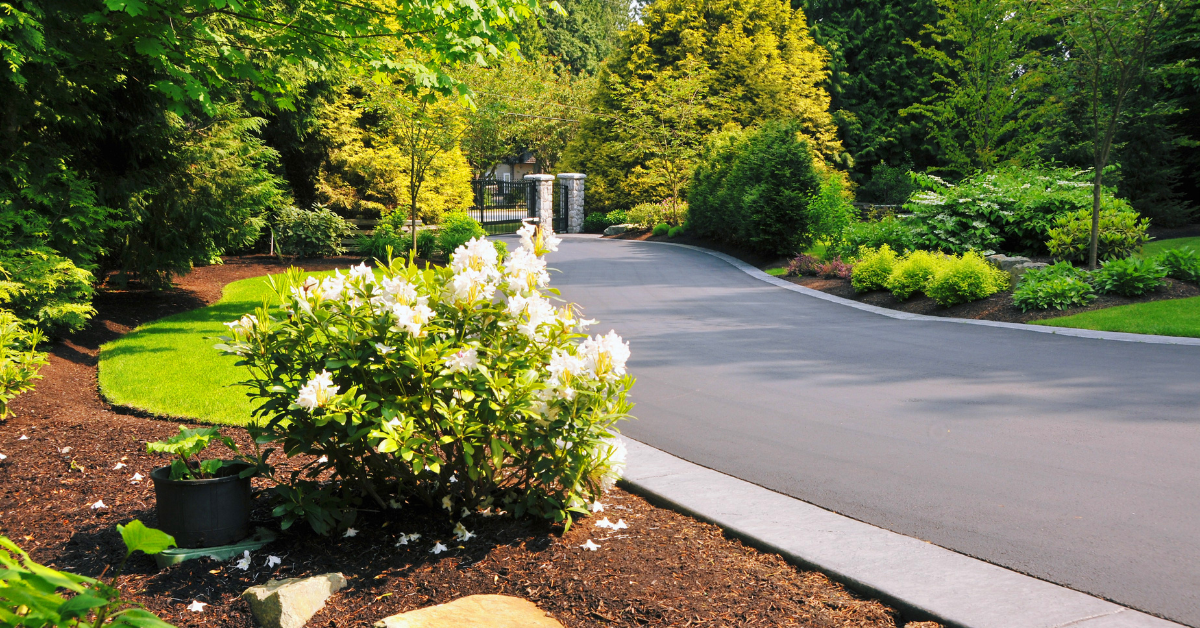Ah, summer. It’s the season of sunshine, beach trips, pool parties, and… unbearable heat? Though it’s the season that many spend the other three seasons looking forward to, it’s not all a walk in the park. One of the drawbacks is the sometimes oppressive heat that causes you to sweat as soon as you step outside. What’s worse is the negative effects it can have on Maryland landscaping (our weather is all over the place). When the thermometer spells out its ill omens, your plants could be in danger. That’s the bad news. The good news? You can protect your precious landscaping from these particularly aggressive heatwaves. Here’s how.
Watering Wisely
Everyone knows plants need water to survive, just as we humans need food. But there’s more to it than just spraying them with a hose one a day. You have to know how frequently to do it, how much water to give, and even the ideal time of day to perform said waterings.
- Frequency: While daily watering is a common practice, it’s actually better to perform deep, infrequent watering. Doing this encourages plants to develop deep root systems that can maximize resistance to drought.
- Amount of Water: This is a tricky one, as different plants require varying amounts of sustenance. Research the proper amount of water to give each plant in your garden to ensure you aren’t over- or under-watering it.
- Time of Day: To reduce water loss to evaporation, it’s best to water your plants early in the morning or late in the evening. This is when temperatures are cooler and winds are generally calmer.
Mulching for Moisture Retention
Say hello to your landscaping’s best friend: Mulch! During these hot, hot days, it acts as an effective insulating barrier that keeps the soil nice and cool while retaining the moisture needed for plants to survive and thrive. As if that wasn’t enough, mulch does even more heavy lifting by keeping weed growth at bay, meaning there’s less competition for water.
For Maryland landscaping, you might want to consider using organic mulch options—shredded hardwood, bark, or leaf mulch, for example—to not just retain moisture, but improve the quality of your soil over time. Win-win!
Choosing Heat-Resistant Plants
We know this one is a little late for this year’s landscaping, but keep it in your back pocket for when next year rolls around: Opt for native-tolerant plants that have adapted well to this state’s climate. Why? Because they’re better equipped to handle the region’s heat, humidity, and predictably unpredictable droughts.
Here are some fantastic plant choices for Maryland landscaping:
- Black-eyed Susan (Rudbeckia hirta)
- Purple coneflower (Echinacea purpurea)
- Switchgrass (Panicum virgatum)
- Eastern red cedar (Juniperus virginiana)
The benefits of these plants are plenty. They resist the heat, require less maintenance, and support local wildlife and pollinators!
It’s worth noting here that we aren’t telling you these are the only plants you can plant. We just want you to be aware that if you choose non-native plants, you’re likely going to have to work harder to keep them alive and healthy.
Providing Shade Where Possible
Plants can suffer from too much direct sunlight, just like people! That’s why it’s important to be mindful of placing them strategically, where they can enjoy some shade for at least part of the day. Don’t have any natural shade? You can always install shade cloths, large umbrellas, or pergolas to keep the more vulnerable plants comfortable. Over time, these shaded spots help to preserve the moisture in your soil and create microclimates that are a bit cooler within your yard.
This can be a tricky task for certain lawns, so you may need to enlist the help of landscaping companies in Maryland—hint: RELS Landscaping. We’re a trusted landscaping supplier with various glowing reviews to our name.
Lawn Care Adjustments
There are also some small but effective changes you can make to your lawncare routine.
- Raise your mower blade. This will keep your grass a bit longer, which provides shade to plant roots and aids even more in retaining moisture. If you cut your grass too short, you could cause brown patches as well as unnecessary stress to your lawn.
- Avoid fertilizing during peak summer heat. While fertilizer does encourage growth, such growth requires energy and water—two things that may be a bit scarce when the oppressive heat is beating down on the plants. Save the heavy fertilization for the milder seasons (spring and fall).
Help Your Maryland Landscaping Thrive
We all know Maryland has unpredictable weather, but we’re bound to get an intense heatwave or two each summer. When you take the precautions and plan accordingly—and get your supplies from a reliable landscaping supplier—your Maryland landscaping can thrive despite the aggressive heat. If you need help prepping your landscaping for future seasons or establishing a new lawncare routine, get in touch with us at RELS. As one of the top landscaping companies in Maryland, we’re happy to help your plants thrive!

